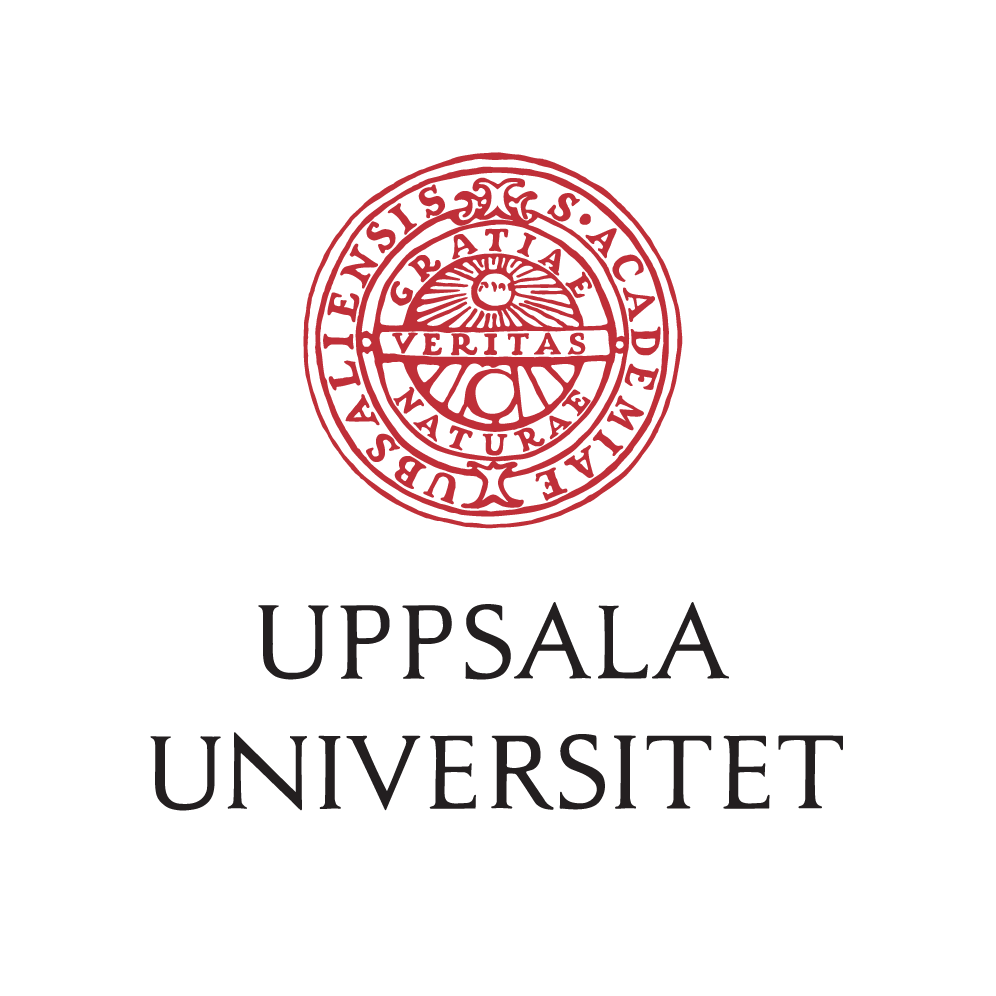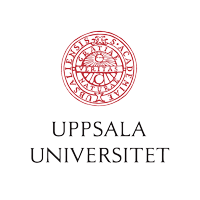

Getting around

There are several places in Uppsala that may be worth a visit.
Near the Uppsala University main building (“Universitetshuset”), the conference site:
Rune stones in the University park (between Universitetshuset and Gustavianum building), including several knotted ones (https://sv.wikipedia.org/wiki/Upplands_runinskrifter_937 https://sv.wikipedia.org/wiki/Upplands_runinskrifter_938 https://sv.wikipedia.org/wiki/Upplands_runinskrifter_931).
The Uppsala Cathedral (https://www.svenskakyrkan.se/uppsala) which is open daily 8:00-18:00, free. Treasury until 17:00, 50 SEK. Guided tour in English: of the Cathedral at 15:00, free, of the treasury at 16:00 (50 SEK for admission, the tour is free, but potentially limited number of places).
Main church of Sweden; seat of the Archbishop of Uppsala. Houses relics of Eric the Holy, the patron saint of Sweden. Burial place of, among others, Gustav Vasa (in the aftermath of the Stockoholm bloodbath in which his parents were killed, he became the leader of Sweden’s War of Liberation and eventually the king of Sweden, ending the Kalmar Union of Scandinavia; the Vasa Ship was named after him, see “Gamla Stan” and “Vasa Ship Museum” in Stockholm), Svante Sture and his sons (killed in the Sture Murderes, see “Uppsala Castle”), and of Olof Rudbeck the Elder (see “Gustavianum”, “Linne Botanical garden”).
Museum Gustavianum (https://www.gustavianum.uu.se/gustavianum-eng/) Tue-Sun, 10:00—16:00, 50 SEK, Free 30 min tours daily, at 13:00 in English, at 15:00 in Swedish.
Medium-sized museum in the oldest standing Uppsala University building (from 17th century). The museum is capped with a large cupola in which lies the anatomical theater of Olof Rudbeck the Elder, professor of medicine at Uppsala and (co-)discoverer of the lymphatic system.
Other permanent exhibits include:
The Augsburg Art Cabinet, cabinet in the sense of pieces of furniture, made from all imaginable exotic and expensive materials and filled with contents and ornamental details intended to reflect the entire cosmos on a miniature scale. The best preserved example of its type, it contains approximately 1 000 different artifacts. It was given by the city of Augsburg to King Gustavus Adolphus in 1632 during the Thirty Years’ War, at the rise of the Swedish empire.
Artifacts from Uppsala University history containing lecture notes from the first semester of the university in 1477 and exhibitions concerning Uppsala scientists such as Carl von Linne (see “Linne house and garden”) and Anders Celsius, including Celsius thermometer with the original “reverse” temperature scale.
Archaeological exhibits: one containing objects from classical antiquity, most of them being excavated by Uppsala University archaeologists and one containing objects excavated from the burial field in Valsgärde, approximately 7 kilometers north of Uppsala, which was used from the 6th to the 11th century, during the Vnedel period (see “Gamla Uppsala”).
Nearby on the castle hill:
Uppsala Castle which has a nice view over the town from the “back side” of the Castle.
One can visit the underground 16th century ruins (http://vasaborgen.se/in-english, 10:00 to 18:00, 120 SEK), site of the 1567 Sture murders (https://en.wikipedia.org/wiki/Sture_murders); these Sture are descendants of Sten Sture the Younger, a regent of Sweden during the Kalmar union, who chose to adapt the Sture name (of Sten Sture the Elder, an earlier a regent of Sweden during the Kalmar union, see “Gulla Stiegen”) for political purposes, despite only being distantly related.
Two museums in the castle building, Uppsala art museum (http://uppsalakonstmuseum.se/, 12:00-16:00, Thurs till 20:00, free) and Peace museum (http://www.fredenshus.se/ Wed-Sun, 12:00-17:00)
Carolina Rediviva library (weekdays 10:00–16:00, check https://libcal.ub.uu.se/hours/?, free).
The university library building housing an exhibit of documents and maps, including the Silver Bible (https://en.wikipedia.org/wiki/Codex_Argenteus) taken by Queen Christina as a booty in Thirty Years’ War (continuing on the theme set by her father Gustavus Adolphus with the Augsburg Cabinet, see “Gustavianum”) and the Carta Marina (https://en.wikipedia.org/wiki/Carta_marina).
Further up from the hill is Uppsala Museum of Evolution (http://www.evolutionsmuseet.uu.se/indexeng.html. zoology part closed for renovations, paleontology open; Tue-Sun 12-16, 50 SEK) houses the largest collection of genuine dinosaur skeletons in Scandinavia, including the only specimen in the world of the long-necked dinosaur Euhelopus zdanskyi.
Central Uppsala:
Linne house and garden (http://www.linnaeus.se/en/about-your-visit/) 11:00-17:00, 80 SEK. Guided tours of museum and garden in English Tues–Sun at 14.30. In the museum you can also use our audioguide in English.
The botanical garden was started by Olof Rudbeck the Elder but developed by and consequently renamed after his son’s student Carl Linnaeus. The house was Linnaeus family home from 1741.
Upplands museum (https://www.upplandsmuseet.se/in-other-languages/information-in-english/) Tues-Sun 12-17, free. The county museum for Uppsala. Permanent exhibitions which describe the history of the city of Uppsala and the province of Uppland over a period of 5,000 years.
Gamla Uppsala (Old Uppsala) burial mounds and museum. About an hour walk or a 25 minute bus ride north of Uppsala lies Gamla Uppsala (Old Uppsala).
It was an important center from around 4th century AD, known as the residence of legendary early Swedish kings and the location of the Thing (general assembly) of all Swedes. Old Uppsala was a religious center in the ancient Norse religion and later in Christianity, being the seat of the archbishop of Sweden until 1273 (when it was moved to the Uppsala Cathedral). It is a site of multiple burial mounds, including three large “royal mounds”, dating to 5th and 6th centuries (the Vendel period), which form the main features of the site today.
The Gamla Uppsala museum (https://www.raa.se/in-english/events-seminars-and-cultural-experiences/experience-the-cultural-heritage/gamla-uppsala-museum/, 11:00 – 17:00, 80 SEK) describes the Vendel- and Viking era history of Gamla Uppsala.
Behind the Gamla Uppsala Church is Disagården (https://www.upplandsmuseet.se/besok-oss/disagarden/#) a small open-air museum (11:00 – 17:00, free).
One can reach Gamla Uppsala by walking (a part of) one of the Linne’s trails (https://www.linnestigarna.se/gamla_uppsala/linne_gauppsalastigen_folder_eng_web_2014.pdf) or the St. Erik’s path (https://www.uppsala.se/globalassets/dokument/friluftsomraden/eriksleden_folder_2011.pdf) which run largely in parallel.
Along the way one passes Röbo and Domarringen DiscGolf courses.
After reaching Gamla Uppsala one may get some refreshments at the Odinsborg restaurant and cafe (https://www.odinsborg.nu/).
More walking options:
Gula Stigen (the yellow path, https://www.uppsala.se/contentassets/f85180009317461d969f04b8c25f87a6/gulastigen_folder_12sid_2018_web.pdf) is a 10 kilometer walking path starting from the city park (Stadsträdgården) in central Uppsala and leading to Lake Mälaren. Initial part passes by the Sture monument (to Sture the Elder, regent of Sweden during Kalmar union) by Carl Milles (see “Millesgården”).
For other paths around Uppsala see https://www.uppsala.se/kultur-och-fritid/natur-och-friluftsliv/vandringsleder-och-stigar/.
Selected activities in Stockholm:
Gamla Stan (Old city) historic core, with Stortorget in it’s center. Famous as the sight of the Stockholm Bloodbath it is now home to the Nobel Prize museum (https://nobelprizemuseum.se/en/, daily 9:00-17:00 120 SEK).
City tours – several tips-based tours operate in Stockholm, including descriptively named Free Tour Stockholm (http://freetourstockholm.com/) and Stockholm Free Tour (http://www.stockholmfreetour.com/).
Vasa Ship Museum (https://www.vasamuseet.se/en) open daily 08:30-18:00, 150 SEK, regular guided tours in various languages. By near-universal consensus the most impressive museum in Sweden. Built by order of King Gustavus Adolphus for his war efforts (see also “Gustavianum”) the ship sank in 1628 after sailing 1,300 m. It was recovered from the waters just outside Stockholm harbor in 1961 in a very well preserved state.
Near Vasa museum, one finds the Nordic museum (https://www.nordiskamuseet.se/en) dedicated to cultural history of Sweden from 16th century to the present (9:00-18:00 140 SEK).
National Museum (https://www.nationalmuseum.se/en) free, opening hours vary, closed Mon. Sweden’s main museum art reopened in Fall of 2018 after 5 years of renovations and modernizations. Collections includes multiple notable works, including several by Rembrandt.
Fotografiska (https://www.fotografiska.com/sto/en/) Sun-Wed 09.00–23.00, Thu-Sat 09.00–01.00, 165 SEK. Museum of photography with rotating exhibitions, extra long opening hours and top floor restaurant and bar with stellar views.
More in Djurgården area:
Skansen (https://www.skansen.se/en/) 10:00- 20:00, some activities shorter hours, 220 SEK. “Skansen is the world’s oldest open-air museum, showcasing the whole of Sweden with houses and farmsteads from every part of the country.”
Gröna Lund (https://www.gronalund.com/en/) 11:00-23:00, Admission 120 Sek, rides extra, or various package deals, admission after 6 pm costs more. Stockholm’s amusement park with rides, concerts and food. Admission price includes access to the evening shows. See schedule here: https://www.gronalund.com/sv/scen-show/
Many other museums, including Astrid Lindgren inspired children’s museum Junibaken (https://www.junibacken.se/en/) art museums Liljevalchs (https://www.liljevalchs.se/), Waldemarsudde (https://www.waldemarsudde.se/in-english/), and Thielskagalleriet (https://www.thielskagalleriet.se/) as well as the ABBA museum (https://www.abbathemuseum.com/en/) and others.
Walk along Djurgårdsbrunnsviken (https://en.wikipedia.org/wiki/Djurg%C3%A5rdsbrunnsviken) is picturesque and passes by several museums, including The National Maritime Museum (https://www.sjohistoriska.se/en, free, 10:00 – 17:00), the Ethnographical Museum (http://www.varldskulturmuseerna.se/en/etnografiskamuseet/, free 11::00-17:00, Wed till 20:00), and the Technical Museum (https://www.tekniskamuseet.se/en/, 10::00–17::00, 150SEK, free on Wed evenings 17:00–20:00) and more.
Further afield:
Millesgården (https://www.millesgarden.se/home.aspx) 10:00-17:00, 150 SEK. The villa of sculptor Carl Milles and his wife painter Olga Milles. The garden has great views and exhibits many of Carl Milles’s sculptures. The museum’s art gallery has changing exhibitions.


